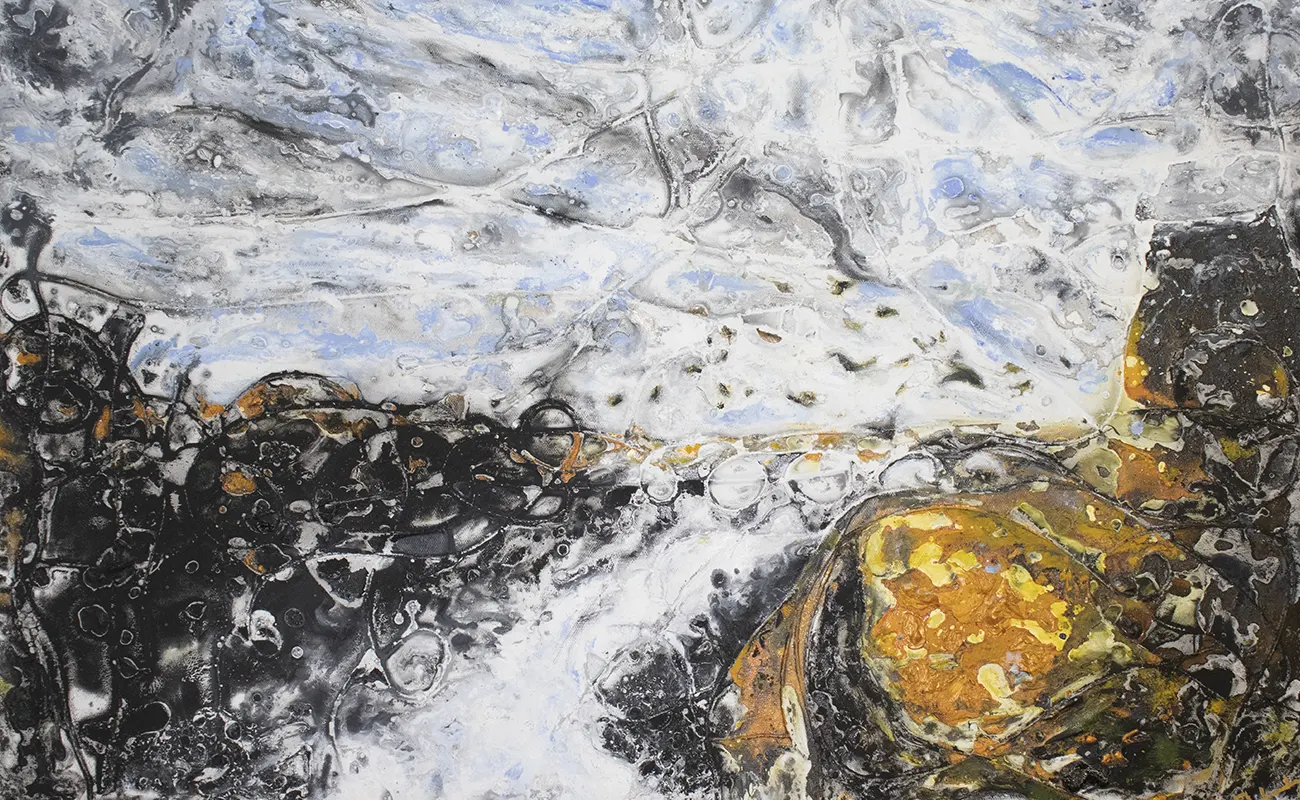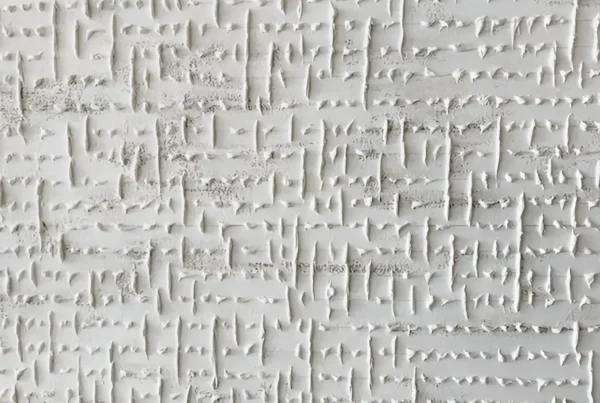“I like to call my style Reasoned Chance, exploring the ideas of chaos and order in the world and people around us.”
From Architecture to Aquatic Artistry: The Journey Begins
Adrian Flaherty, a 46-year-old artist, has long called London home, aside from a brief stint studying architecture in Canterbury. The bustling ambiance of the city, with its blend of businesses, travelers, and academic institutions, has significantly shaped Flaherty’s artistic identity. This lively setting spurred him to explore a painting technique that melds spontaneous methods reminiscent of the previous century’s art narrative with a touch of personal expressiveness. Through his works, Flaherty vividly portrays London’s structured yet contrasting chaos, highlighting a delicate equilibrium between chance and reason.
Coming from a rich professional lineage spanning medicine, engineering, and commerce, Flaherty has always harbored a creative spark. This spark led him onto a less trodden path, beginning with a foundational foray into Art and Design. This quickly evolved into an intensive exploration of architecture in Canterbury for over two years. However, a brief diversion into administrative fields momentarily paused his academic pursuit, until he circled back to his creative roots, earning a sculpture degree from the prestigious University of the Arts London. In the concluding stage of his academic journey, Flaherty delved into the intellectual realms of Mathematics and Geography, which now deeply inform his meticulously crafted artwork. From a tender age, as a passionate club swimmer, the allure of water has been a constant, nurturing a lasting infatuation with aquatic themes. This allure elegantly unfurls across his canvases, where he skillfully choreographs the gentle dance of paint, encapsulating the fluid grace of water.
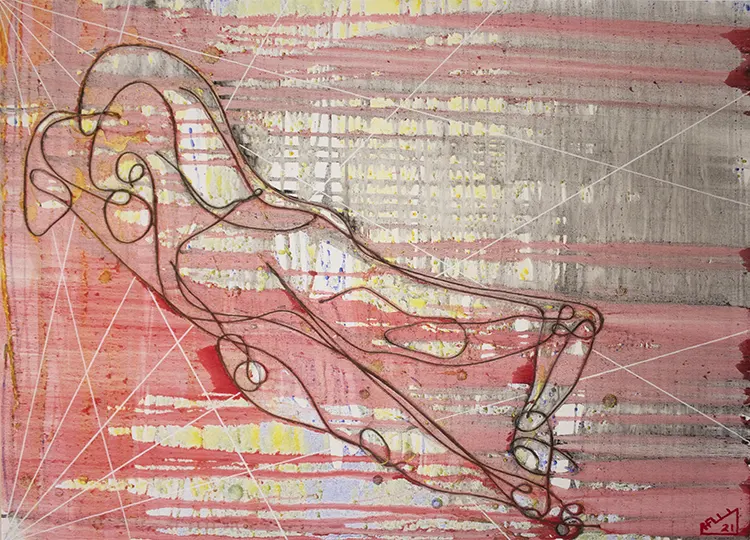
Reasoned Chance: The Dichotomy of Adrian Flaherty Creations
Adrian Flaherty explores art through a unique lens he calls ‘Reasoned Chance’. His work usually begins with a clear subject, like a landscape or human figure. He lets chance lead the first strokes, then carefully aligns everything to match the initial idea. This approach blossomed during his studies and peaked in 2016, when he focused on the theme of ‘home’. Post-academia, Flaherty started drawing from nature, often going on outdoor adventures. This led to his ‘London Bridges’ series and a notable collection of cliff and beach scenes along England’s western coast.
Specifically, the way Flaherty portrayed the bridges over the River Thames reflects his thoughts on home amid the urban chaos. Cornwall’s dramatic weather pushed him to delve deeper into environmental themes, further fueled by the evident impacts of global warming. His art illustrates the contrast between fluid elements like rivers and coasts, against sturdy structures like bridges, capturing the array of influences shaping modern life in the Western world.
Flaherty’s studio in South London is a peaceful retreat from the city hustle. Although music once aided his painting ambiance, now the quiet studio amidst the city’s bustle suffices. He manages to balance his artistic pursuits against other duties like bookkeeping and admin tasks. His studio setup includes tables for laying out work, switching to an easel during the drying stage. Finished works either adorn his studio or home, and he often revisits them for touch-ups. Typically working on three or four pieces at a time, Flaherty keeps distractions at bay with handy studio amenities like a fridge and a kettle, ensuring a steadfast focus on his artistic journey.
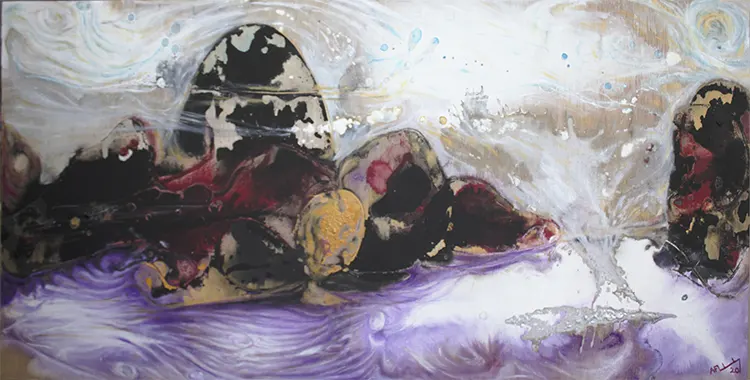
Influences and Evolutions: The Past Meets the Present
Adrian Flaherty’s artistic inclinations have been shaped by a range of individuals and stylistic eras. During his school years, he was captivated by the picturesque landscapes and distinct characters depicted by Cezanne, a fascination that revived after completing his degree. His journey through architectural studies ignited an appreciation for organic building designs, showcased in the works of Frank Lloyd Wright and Frank Gehry. This phase marked Flaherty’s shift towards sculpture, where Marcel Duchamp and his novel concept of Chance played a pivotal role—aligning with Flaherty’s unique style he termed ‘Reasoned Chance’. His natural attraction towards the organic echoed Jackson Pollock’s profound statement, “I am nature.” Later in his artistic journey, Helen Frankenthaler’s creations subtly shifted his style away from the Abstract Expressionists, although he still dips into the realm of abstract painting occasionally.
Marcel Duchamp’s masterpiece, 3 Standard Stoppages, significantly mirrors Flaherty’s own artistic tendencies. The clever blend of man-made objects with the untouched spirit of nature, portrayed through the flowing strings in Duchamp’s piece, reflects Flaherty’s early liking for using string to outline initial compositions in his painting process. The recurring theme of the number three in his work, endearingly referred to as “Three-dom”, comes alive through the use of three primary or sometimes secondary colors, each representing different thematic elements in his figurative canvases; blue for negativity, red for positivity, and yellow for expression.
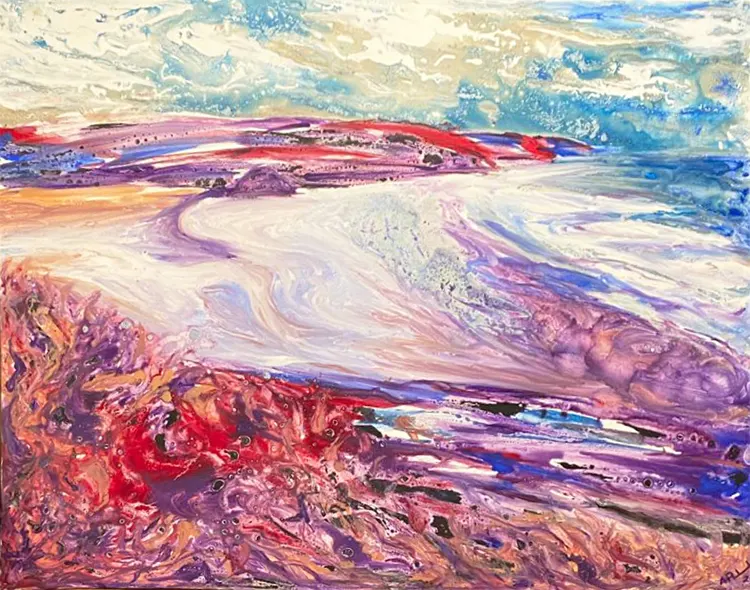
Adrian Flaherty: The Interplay of Acrylics, Oils, and Future Endeavors
During his demanding sculpture degree, Adrian Flaherty was fervently encouraged to delve into various Fine Art forms. In this exploratory phase, Flaherty uncovered a natural affinity for blending acrylic and oil paint, a technique he had experimented with before his formal education. The somewhat contrasting yet harmoniously interweaving dynamics of these mediums, as they wandered across the canvas, utterly fascinated him. Now, oil paint prominently features in his oeuvre, thanks to the extensive range of textures it allows him to explore.
Looking forward to upcoming projects, Flaherty aims to extend his lauded bridge series beyond the picturesque bounds of London, while also continuing his walking project along England’s west coast. His latest venture into figure paintings holds promise, with well-laid plans to intricately intertwine these endeavors into a coherent narrative. Besides painting, Flaherty has found substantial fulfillment in compiling volumes that encapsulate his extensive body of work over the years. Currently, a second iteration of a “Text Book” is meticulously being crafted, ready to delve into the myriad influences from his childhood, through his educational journey, and into his present-day artistic venture, adeptly showcasing the ongoing evolution of Flaherty’s artistic voyage.



